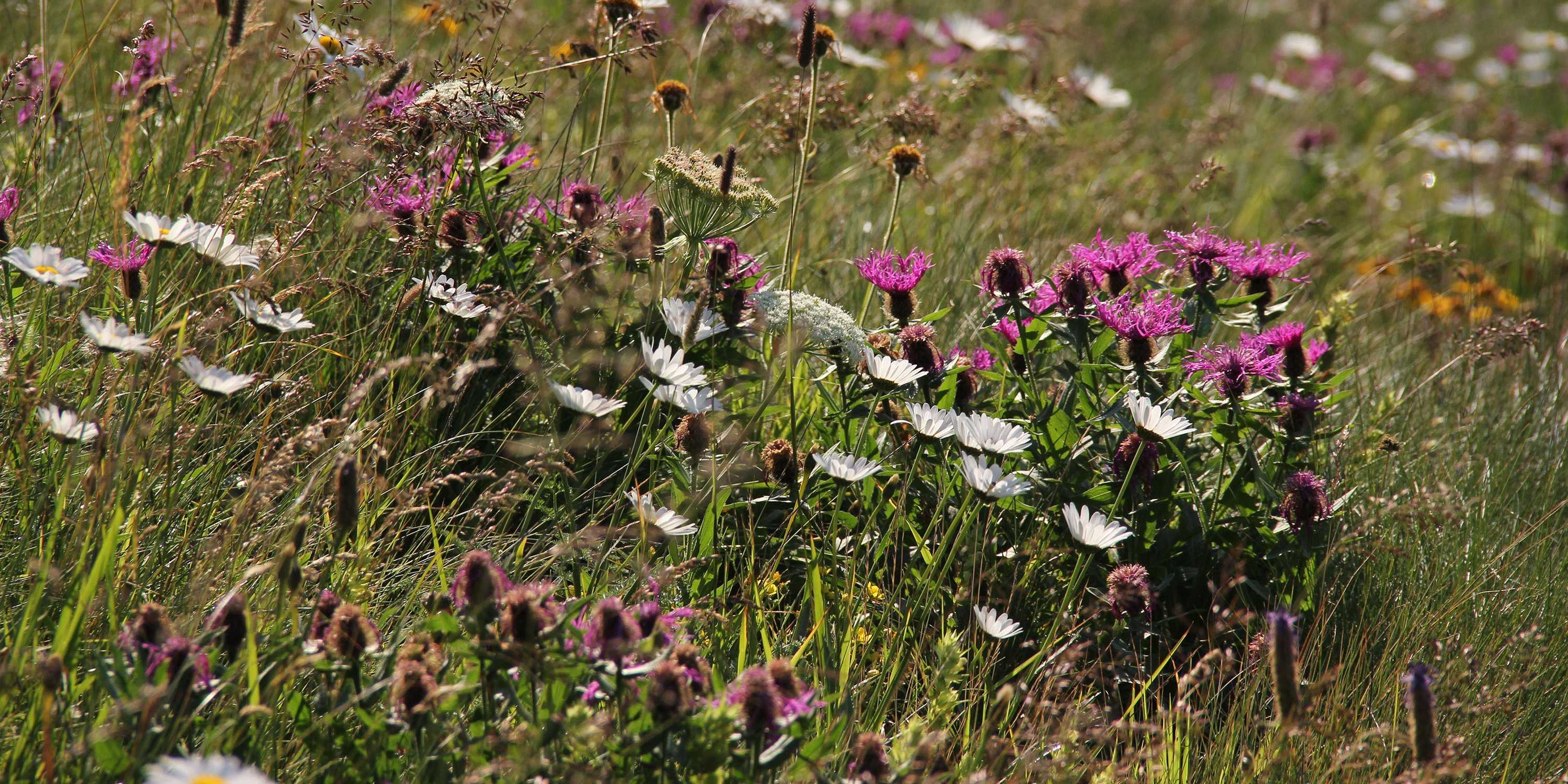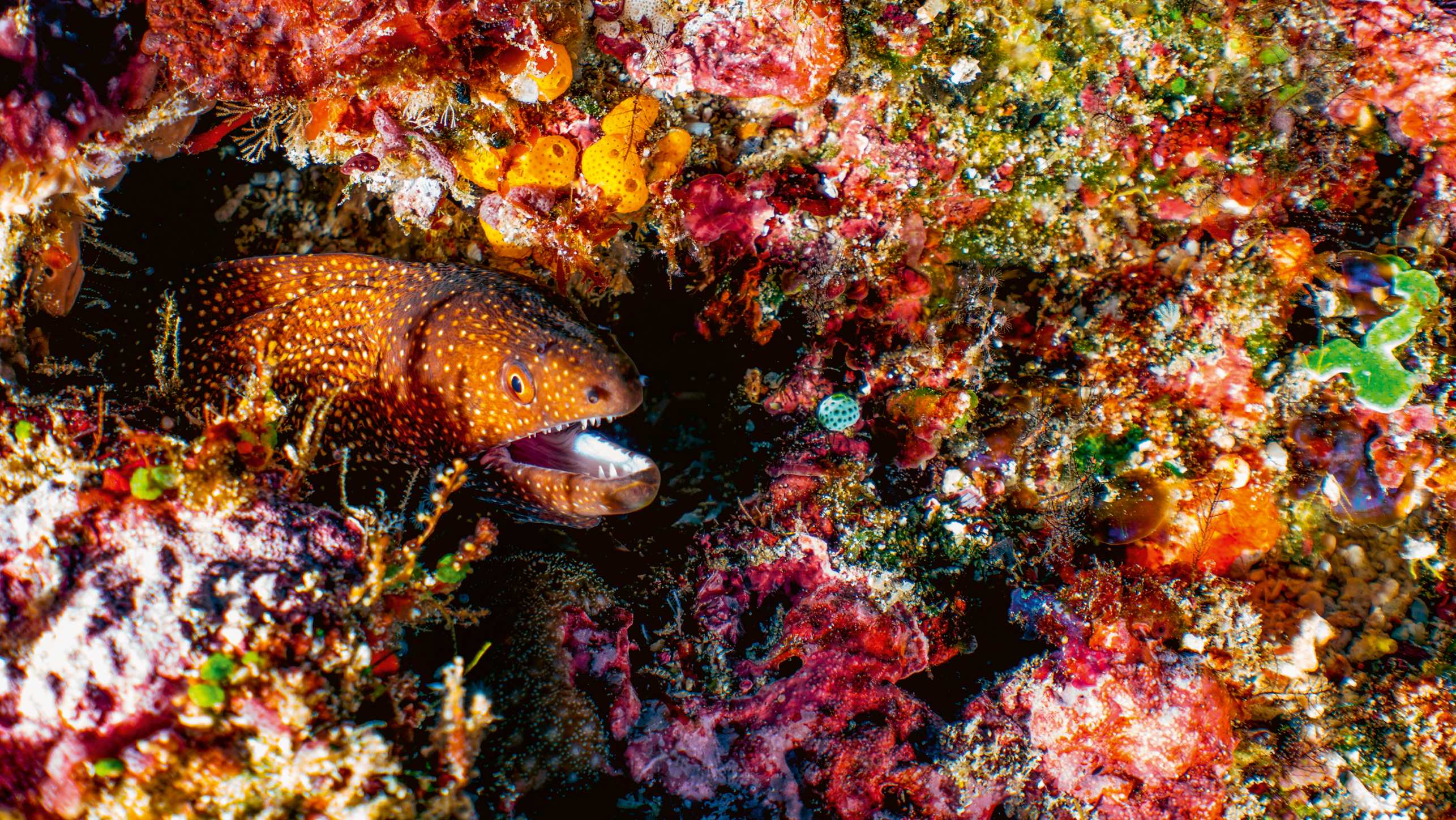
The beauty and benefits of biodiversity
Biodiversity is beautiful, but it’s also vitally important. ETH researchers are getting to the heart of how species diversity and genetic diversity evolve – and why we must fight to preserve them.
Spring is synonymous with bright yellow dandelions, lush green fields and cloudless blue skies, a captivating combination of colours that sends many people into raptures of delight. Yet biodiversity researchers such as Alex Widmer, Professor of Plant Ecological Genetics in the Department of Environmental Systems Science, take a rather different view: “I know too much about ecosystems to take any pleasure in something so monotonous,” he says. His notion of beauty tends more towards dry grasslands and natural meadows rich in different species. “A far cry,” he says, “from the picture-postcard idyll.” He argues that such areas are beautiful in much less obvious ways. Unfertilised, minimally cultivated meadows and dry grasslands are incredibly diverse, he says, which makes them not just beautiful, but essential.
“Species diversity makes ecosystems resilient,” says Widmer, “and at the core of that resilience is genetic diversity.” Without genetic diversity, he explains, species and organisms cannot adapt to existing and evolving environmental conditions. And it’s this adaptability that lies at the very heart of speciation.

Loïc Pellissier, Professor of Ecosystems and Landscape Evolution in the Department of Environmental Systems Science, agrees that much of the beauty of biodiversity is hidden from view. One of the most beautiful aspects of biodiversity, he says, is how species co-evolve and exist together. “All organisms have evolved to interact with each other, as anyone who works in species diversity will tell you. To me, ecosystems are like huge jigsaw puzzles, in which all the pieces fit together more or less perfectly.” His research focuses on how species diversity arises and evolves. Because this occurs over the course of millions of years, Pellissier relies on computer models to simulate geological processes and the evolutionary forces that lead to the formation of new species.
Genetic diversity
Pellissier also conducts numerous field projects to unlock the secrets of species diversity. He favours a new and increasingly popular method that enables ecologists to detect species and organisms from the DNA they leave behind in the environment – known for short as environmental DNA, or eDNA. Researchers simply collect water and soil samples and analyse them to see what genetic material they contain. They then match whatever DNA they find to the corresponding organisms, provided a reference is available for this. This method provides a relatively quick way to determine whether a species is present in an ecosystem or not – and it works for a wide variety of organisms. “eDNA gives us a new insight into an ecosystem’s diversity,” he says.
Recently, Pellissier co-authored a study on the diversity of reef fish worldwide. Researchers collected over 200 seawater samples from various tropical coral reefs and then “fished out” whatever fish DNA they could find. Using the eDNA method, it took the researchers less than two years to confirm the presence of more fish species and families than experts had managed to identify during 13 years of reef dives.
“Genetic diversity is the most neglected area of biodiversity.”Alex Widmer
Yet species diversity is only one aspect of biodiversity, the others being habitat diversity and genetic diversity. “Of the three, genetic diversity is the one that has been most neglected,” says Widmer. “Studying and monitoring genetic diversity is much more difficult and time-consuming than monitoring habitats or species numbers.” Hence the numerous inventories of Swiss plants, animals and habitats – from forests and wetlands to dry grasslands. “Yet there isn’t a single monitoring project in Switzerland that focuses on the genetic diversity of living things,” says Widmer, “This is despite the fact that genetic diversity is fundamental for species diversity and adaptability.”
To fill this gap, Widmer has joined forces with the Swiss Federal Institute for Forest, Snow and Landscape Research WSL on a project that aims to add this crucial element to Switzerland’s existing biodiversity monitoring systems. With the support of the Swiss Federal Office for the Environment (FOEN), Widmer and his colleagues have already launched a pilot study of five different species, including two plant species, a butterfly and a toad. The fifth species in their study is the yellowhammer, a songbird commonly found in cultivated areas of Switzerland. The researchers have already sequenced the genomes of one hundred individual yellowhammers from right across the country.

As well as working with living organisms, the researchers also study the genetic material of specimens held in collections. “This tells us whether populations from over 100 years ago were as diverse as today’s, or whether some of that genetic diversity has been lost,” says Widmer. Research into biodiversity in Switzerland has already revealed a sharp decline in species diversity, he notes: “We’d like to find out whether the same applies to genetic diversity.” Once the pilot study is complete, Widmer’s goal is to set up a large-scale monitoring project encompassing up to 50 species. These would be examined at regular intervals to detect changes in their genetic diversity. However, it is still unclear whether this complex and ambitious project will receive the necessary funding.
Fragile and endangered beauty
Time is of the essence, because biodiversity is under threat and declining rapidly. It is only by firmly fitting together the many different pieces of the biodiversity puzzle that we can slow the extinction of individual species. Reduce this network by half, and species will die out a thousand times faster – and when external pressures such as climate change are factored in, species extinction will occur a thousand times faster again.
“Biodiversity is essential to our lives,” says Widmer. “It impacts everything from our mental well-being to whether we have food on the table.” Diverse ecosystems are much more stable and better geared for the future than monotonous, species-poor habitats. Pellissier nods in agreement: “Biodiversity is like classical art in the sense that it can’t be replaced. If the earth loses its biological riches, it will lose its magic.”
About the researchers
Loïc Pellissier is Professor of Ecosystems and Landscape Evolution in the Department of Environmental Systems Science. His research focuses on landscape dynamics and how these are linked to biodiversity.
Alex Widmer is Professor of Plant Ecological Genetics in the Department of Environmental Systems Science. He conducts research into evolutionary processes and biodiversity.

Comments
No comments yet